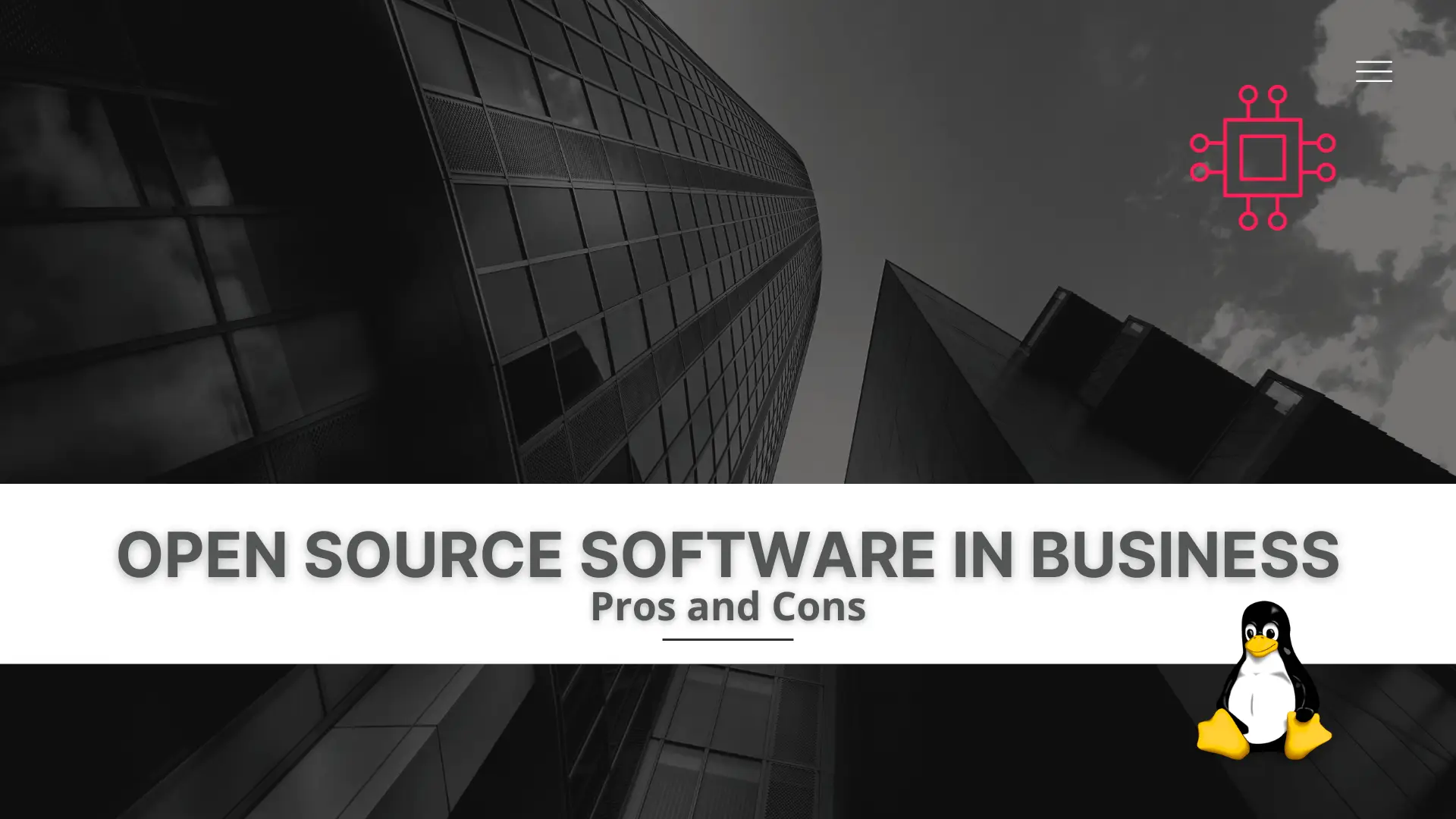
Are you interested in a career in Linux or an aspiring Linux professional? Discover how you can earn over $250k in just 5 years. With

Discover the untapped potential of open source software in business and learn about the advantages and disadvantages that can make or break your software decisions.
Open source software has gained significant popularity in recent years, with many businesses using it as an alternative to proprietary software. But what exactly is open source software, and what are the advantages and disadvantages of using it in business?

Definition of open source software |
Software that falls under the category of open source refers to software that can be utilized, altered, and shared with no charges or legal limitations. The underlying programming codes of such software are readily accessible to the public, granting them permission to modify the software’s original features.
Brief history of open source software |
The roots of accessible software that allowed for modification and sharing can be traced back several decades. However, it was not until the late 1990s and early 2000s that these practices became widespread, as the internet expanded and more individuals joined the open source community.
Importance of open source software |
Open source software has several advantages that make it an attractive option for businesses. It is often more cost-effective than proprietary software, provides greater customizability, and can be more secure due to its large community of developers.
Cost-effectiveness |
One of the primary advantages of using open source software in business is its cost-effectiveness. Because there are no licensing fees associated with open source software, businesses can save significant amounts of money compared to proprietary software. Additionally, open source software often has lower maintenance costs since there are no annual fees or contracts to renew.
Customizability |
The adaptability of accessible software is one of its most appealing features. By allowing for customization, businesses can tailor the software to fit their distinct needs. This is particularly advantageous for businesses that require unique software requirements or need to integrate it with other systems.
Security |
Open source software can be more secure than proprietary software since its code is publicly available and can be reviewed by a large community of developers. This means that bugs and vulnerabilities can be identified and fixed more quickly, reducing the risk of security breaches.
Lack of official support |
One of the main disadvantages of using open source software in business is the lack of official support. Unlike proprietary software, which often comes with customer support and maintenance contracts, open source software relies on the open source community for support. While there are many resources available online, businesses may not be able to get the same level of support as they would with proprietary software.
Potential compatibility issues |
Another potential disadvantage of using open source software in business is compatibility issues. Some open source software may not be compatible with certain proprietary software or may require additional IT resources to integrate properly. This can be a significant issue for businesses that rely on a variety of software systems.
Potential legal issues |
Open source software may also present potential legal issues for businesses. Because the code is publicly available, businesses need to be careful to ensure that they are complying with licensing terms and not infringing on any copyright laws.
Red Hat Enterprise Linux (RHEL) |
Red Hat is a leading provider of open source software solutions for businesses. Its flagship product, Red Hat Enterprise Linux, is an open source operating system that is used by thousands of businesses worldwide.
Apache Web Server |
Over 50% of all websites globally use the Apache web server, which is freely accessible software. Its high level of adaptability allows it to cater to a broad range of web applications.
WordPress CMS |
WordPress is an open source content management system (CMS) that is used by millions of websites worldwide. It is highly customizable and can be used to create a wide range of websites, from simple blogs to complex e-commerce platforms.
Over the past few decades, open source software has gained significant traction in the business world. According to a survey by Red Hat, 69% of IT leaders say that open source is “very” or “extremely” important to their enterprise IT strategy. Additionally, the same survey found that 97% of organizations are using open source software in some capacity.
One of the key reasons for the growing adoption of open source in business is the increasing recognition of its benefits, such as cost-effectiveness, customizability, and security. As more and more businesses seek to adopt agile software development practices and move to the cloud, open source software is becoming an increasingly attractive option.
Future Outlook |
In the next 5-10 years, it is likely that open source software will continue to play an important role in business. The rise of cloud computing, big data, and artificial intelligence (AI) are all areas where open source software is particularly well-suited, and we can expect to see continued innovation and development in these areas.
For example, the rise of containerization technologies like Docker and Kubernetes has been fueled in part by open source software, and these technologies are now widely used in business to improve scalability, agility, and portability. Similarly, the growth of AI and machine learning is being driven in part by open source software libraries like TensorFlow and PyTorch.
As open source software continues to mature and gain broader acceptance, we can also expect to see increased investment in open source by businesses and governments. This investment will likely take the form of increased funding for open source projects, as well as increased collaboration between open source communities and businesses.
Open source software is now a vital tool for businesses. It provides cost-effective, secure and customizable solutions that can be tailored to their needs. However, businesses must also consider potential drawbacks such as lack of support, compatibility issues, and legal concerns. By weighing the pros and cons, they can make informed decisions about adopting open source software. As adoption continues to grow, it will continue to drive innovation and help businesses succeed in a competitive marketplace.
If you found this article helpful, please let us know by leaving a comment below. We would greatly appreciate your feedback!
Related Posts

Are you interested in a career in Linux or an aspiring Linux professional? Discover how you can earn over $250k in just 5 years. With

Are you curious about whether Linux is the right choice for your desktop? This article delves into the Pros and Cons of Running Linux on

Curious about the direction of technology and its impact on the industry? Learn about the “Future of Linux” and its growing popularity, increased focus on
